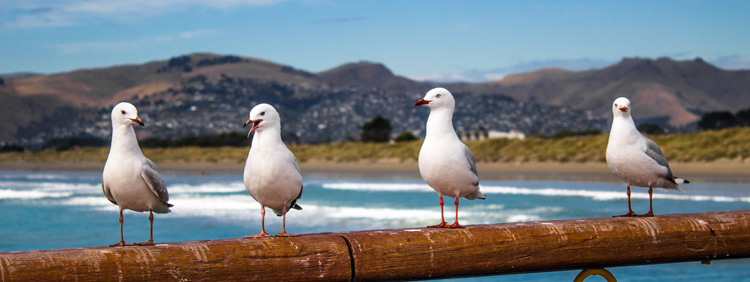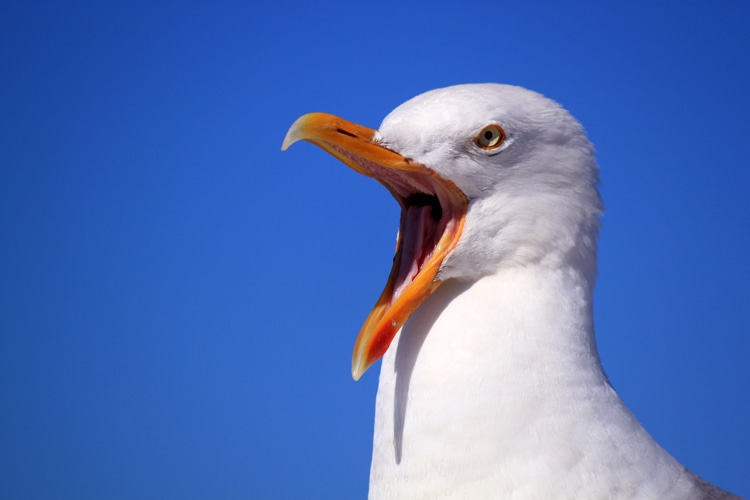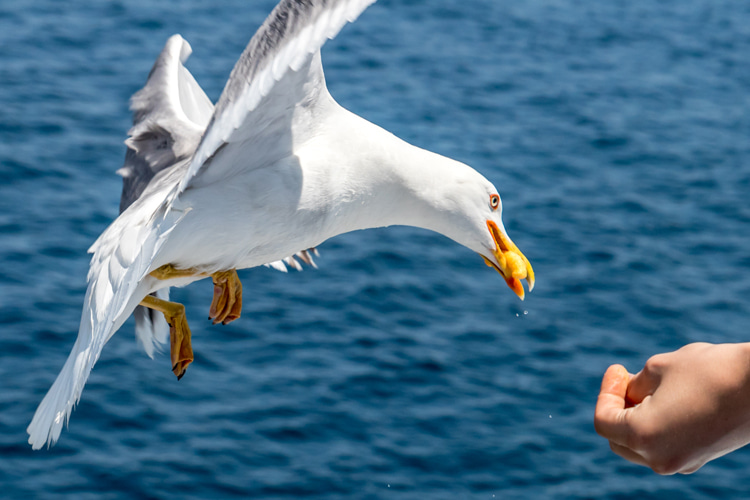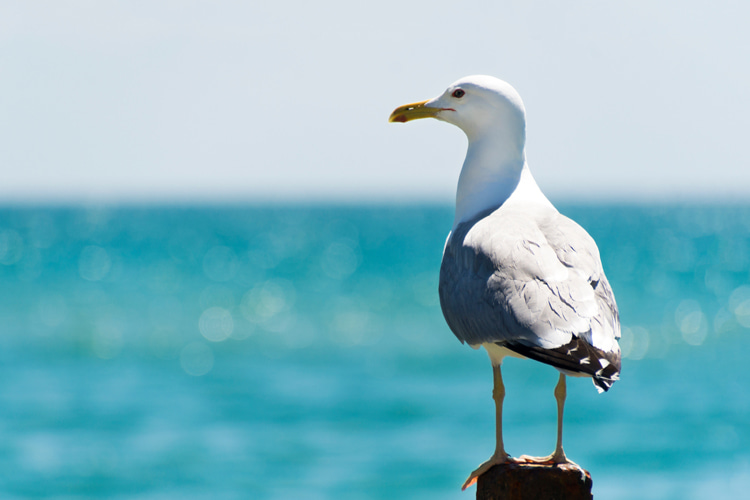The first thing that comes to our mind when we think about seagulls is not how they look like aerial ballet dancers of the ocean.
These winged companions of the coastal horizon are far more portrayed as scavengers begging for your leftover sandwiches.
They also embody the wild symphony of the coastlines, the harbors, and the sprawling blue yonder.
To some, they are a nuisance; to others, they are symbols of freedom.
But how much do we really know about these magnificent, loud, and bold creatures?
Let's take off and fly through 65 awe-inspiring facts about seagulls, guaranteed to ruffle your feathers - in the best way possible.
Physical Features and Skills
- Contrary to popular belief, seagulls are not just white. They come in various plumage patterns, including grays, browns, and even black-tipped feathers.
- Some of the 50 known species, like the grey-headed gull, can reach speeds of up to 40 miles per hour;
- Those webbed feet aren't just for show - they help the birds paddle efficiently in water;
- Seagulls have excellent vision, owing to the high number of photoreceptor cells in their eyes, allowing them to spot food from high altitudes;
- These birds possess a unique pair of salt glands above their eyes, allowing them to consume seawater;
- Seagulls have a specialized tongue that can help them hold onto slippery fish, a useful adaptation for their diet;
- On hot days, they engage in a behavior called "gular fluttering," rapidly shaking loose skin on their throats to dissipate heat;
- The color of their beaks and legs changes according to their age and breeding status, providing an external signal of their life stage;

Behavior and Habits
- Seagulls are intelligent thieves. They have been known to exhibit problem-solving skills, such as dropping hard-shelled mollusks onto rocks to crack them open;
- These creatures often gather in large colonies, which can comprise thousands of birds;
- Seagulls enjoy bathing and are often spotted indulging in communal baths in shallow waters;
- They have a preen gland near the base of their tail, the oil from which they use to waterproof their feathers;
- Some species practice "foot-tapping" on the ground to mimic the sound of rain and lure earthworms to the surface;
- In colonies, many seagull couples synchronize their nesting activities, resulting in eggs that hatch around the same time;
- If humans or other potential threats approach their nesting areas, seagulls can engage in defensive "dive-bombing," swooping dangerously close to deter them;
- Seagulls often gather in large numbers when abundant food sources become available, creating a "feeding frenzy" that can be both chaotic and mesmerizing;
Geographical Habitats
- Seagulls are found all over the world, from the Arctic to the Equator;
- They are incredibly adaptable, thriving not only in coastal regions but also in urban settings where food is abundant;
Reputation
- In various cultures, seagulls symbolize freedom, versatility, and a form of spiritual messenger;
- These birds have been immortalized in literature, most notably in Richard Bach's "Jonathan Livingston Seagull," which explores themes of freedom and self-discovery;
- While some consider them pests due to their scavenging behavior, others admire their adaptability and resilience;
Communication Patterns
- Seagulls have an extensive range of vocalizations that include squawks, chirps, and even a form of "laughing";
- Aside from vocalizations, they also communicate through body language, like puffing up their chests or arching their necks;
- Each family of seagulls has its own unique call that allows them to identify each other in a colony;
- Some seagulls have been observed mimicking human behavior, such as using crosswalks to cross streets safely;
- Seagulls have been seen interacting positively with other animal species, often involving sharing food or cooperative hunting;

Diet
- Seagulls are opportunistic feeders, consuming everything from fish and insects to fruit and human food scraps;
- They possess keen hunting skills, often skimming just above the water's surface to catch fish;
Ecological Roles
- Their scavenging activities help in cleaning the environment by consuming carrion and waste;
- In some environments, the nesting and foraging activities of seagulls contribute to shaping the physical landscape, affecting plant distribution and soil properties;
Breeding
- Many seagull species form monogamous pairs that last for several breeding seasons;
- Their nests are usually made of seaweed, twigs, and other plant material and are built close to each other in colonies;
- Both parents take turns incubating the eggs and feeding the young;
- A typical clutch contains two to three eggs, which can vary in color from white and brown to speckled greenish-blue;
- Seagulls can live up to 25 years, although many don't survive past their first year due to predation and other hazards;
Migration Movements
- While some seagulls stay put year-round, others travel vast distances during seasonal migrations;
- Seagulls employ both celestial and magnetic cues to navigate their way through long migratory journeys;
- Instead of flying directly to their destinations, they often make stopovers to rest and find food;
Social Structure and Interactions
- Within colonies, there are often "alpha" seagulls who assert dominance through displays of aggression;
- Observations have shown that seagulls sometimes show cooperative behavior, like warning others of impending danger;
- Some seagull species have a mutualistic relationship with other animals; they lead them to food sources while benefiting from the partnership themselves;
Predators and Prey
- Seagulls have several predators, including larger birds of prey, like eagles and hawks, and terrestrial predators, like foxes and raccoons;
- In the face of danger, they engage in "mobbing," where a group of seagulls aggressively swoops down on predators to drive them away;
- Some seagulls are known to prey on the eggs of other birds, sometimes even those within their own colony;

In Relation to Humans
- In certain coastal towns, feeding the seagulls is promoted as a tourist activity, although this practice is controversial due to its ecological impact;
- Many beachgoers have stories of seagulls relieving themselves on unsuspecting humans. As it turns out, this is often a defensive tactic;
- Some commercial fisheries consider seagulls a nuisance for stealing bait and catch, affecting their business;
Mysteries and Research
- Despite extensive studies, the complete migratory paths for some seagull species remain unknown, presenting an ongoing challenge for ornithologists;
- Seagulls have been subjects in studies exploring avian influenza, as they can be carriers of the virus without showing symptoms;
References in Popular Culture and Religions
- Seagulls are considered good luck by some sailors, as they're thought to guide ships to land;
- In Christian lore, seagulls sometimes symbolize the soul's journey to heaven;
- Seagulls have appeared in movies such as "Finding Nemo," where they're known for their comical portrayal;
- The cry of a seagull has inspired numerous musical compositions, often linked with sea adventures and exploration;
- Their habit of stealing food has made seagulls the subject of various Internet memes;
Additional Surprising Facts
- Some larger species have been observed eating smaller seagulls, especially the young or injured;
- Though rare, there have been instances where seagulls have used simple tools like bread crumbs to bait fish;
- Their insatiable curiosity often lands them in peculiar situations, like getting trapped in mall buildings;
- Technically, there's no such thing as a "seagull." The term is colloquially used, but these birds are part of a family called Laridae, which includes various species of gulls;
- Seagulls are known to sleep both on land and water. When sleeping at sea, they float;
- Due to their cosmopolitan distribution, seagulls have been said to understand and adapt to multiple human languages in terms of interpreting food opportunities;
- Seagulls often fly in coordinated groups, which is not just for show; it helps reduce wind resistance for trailing birds;
- The beak of a seagull is precisely engineered; it has a hooked tip for tearing food and specialized plates for filtering out mud and silt;
- They can eat up to 20 percent of their body weight in one feeding session;
- Changing global temperatures are affecting their nesting habits and food availability, a concern that has garnered increased scientific attention;
- In Utah, the seagull is honored as the state bird for allegedly saving pioneers' crops from a cricket infestation in the 19th century;
